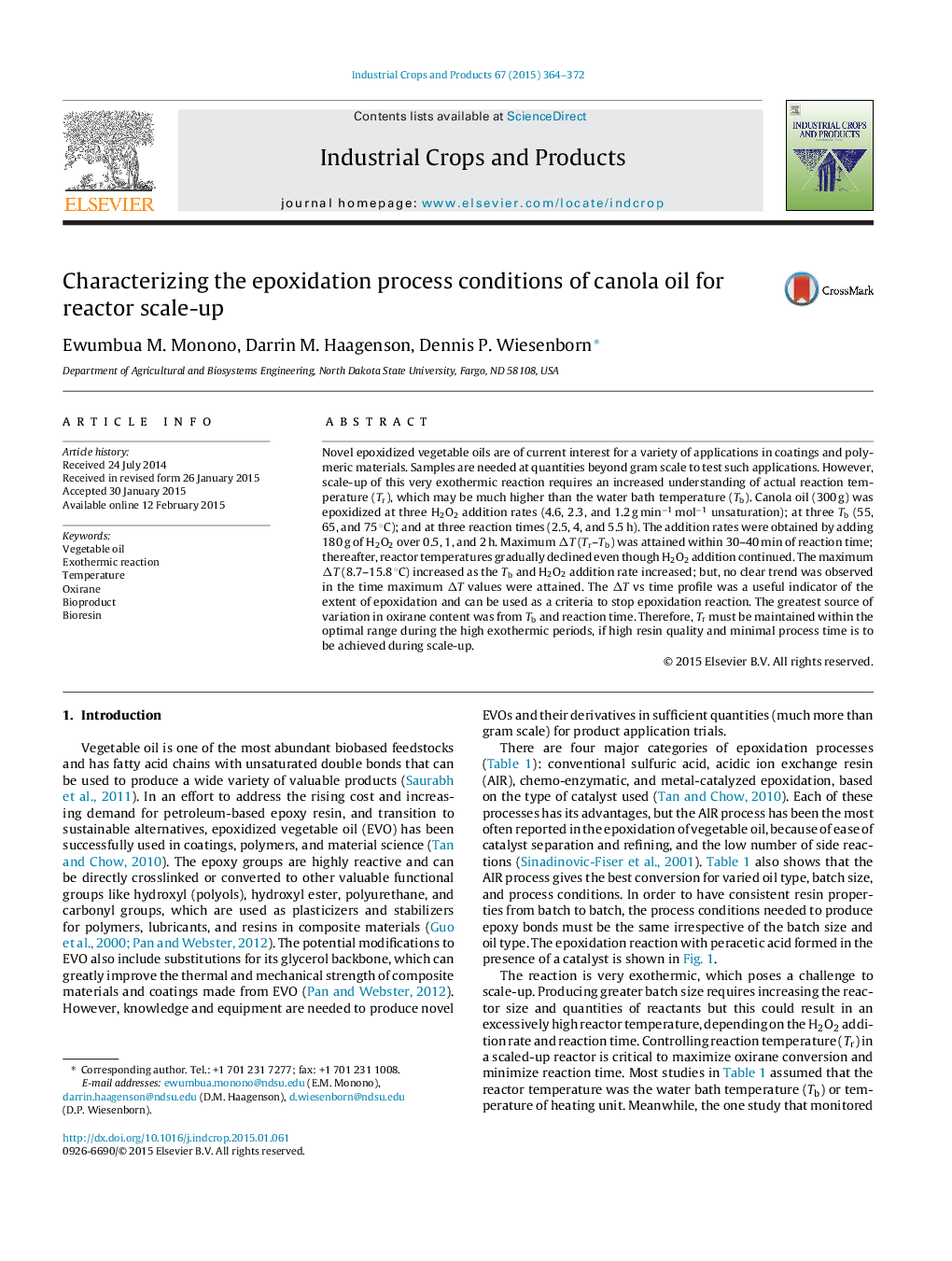| کد مقاله | کد نشریه | سال انتشار | مقاله انگلیسی | نسخه تمام متن |
|---|---|---|---|---|
| 4513052 | 1624842 | 2015 | 9 صفحه PDF | دانلود رایگان |
• Maximum exothermic activity was observed within the first 30–40 min of the epoxidation reaction, which caused the reaction temperature to be 8–15 °C higher than the water bath temperature.
• At least 83% conversion of double bonds to epoxy groups was achieved by 2.5 h; but, maximum conversion (93–97%) was achieved in 5.5 h when epoxidation was done at Tb 55 °C and 65 °C and 2.5–4 h at Tb 75 °C.
• The ΔT vs time profile provided much insight into the behavior of the reaction at different process conditions; the reaction is essentially complete when ΔT is zero.
• Viscosity values were positively correlated with the hydroxyl values (r = 0.85); the hydroxyl value indicates the production of undesired side products at high temperature.
Novel epoxidized vegetable oils are of current interest for a variety of applications in coatings and polymeric materials. Samples are needed at quantities beyond gram scale to test such applications. However, scale-up of this very exothermic reaction requires an increased understanding of actual reaction temperature (Tr), which may be much higher than the water bath temperature (Tb). Canola oil (300 g) was epoxidized at three H2O2 addition rates (4.6, 2.3, and 1.2 g min−1 mol−1 unsaturation); at three Tb (55, 65, and 75 °C); and at three reaction times (2.5, 4, and 5.5 h). The addition rates were obtained by adding 180 g of H2O2 over 0.5, 1, and 2 h. Maximum ΔT (Tr–Tb) was attained within 30–40 min of reaction time; thereafter, reactor temperatures gradually declined even though H2O2 addition continued. The maximum ΔT (8.7–15.8 °C) increased as the Tb and H2O2 addition rate increased; but, no clear trend was observed in the time maximum ΔT values were attained. The ΔT vs time profile was a useful indicator of the extent of epoxidation and can be used as a criteria to stop epoxidation reaction. The greatest source of variation in oxirane content was from Tb and reaction time. Therefore, Tr must be maintained within the optimal range during the high exothermic periods, if high resin quality and minimal process time is to be achieved during scale-up.
Journal: Industrial Crops and Products - Volume 67, May 2015, Pages 364–372
